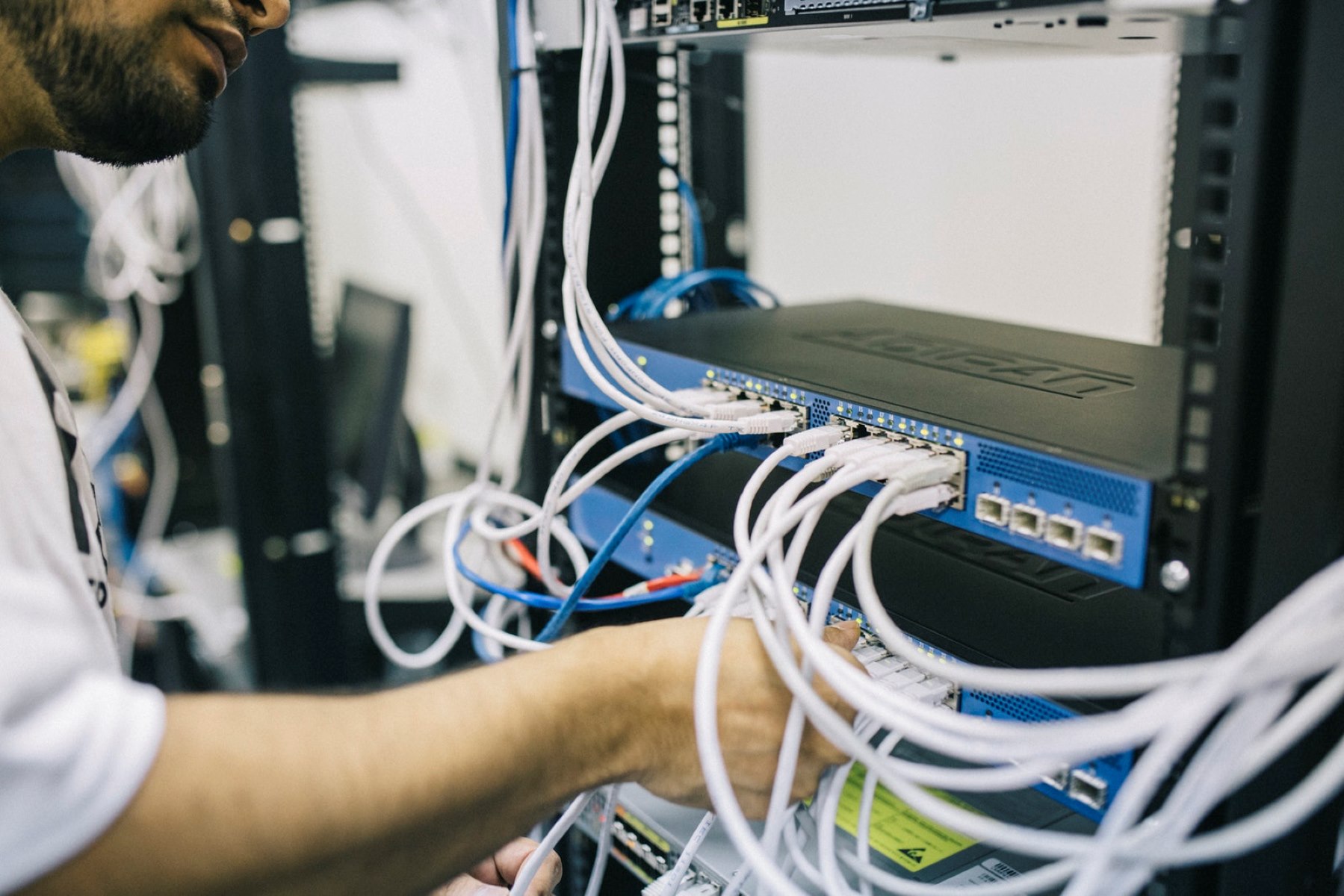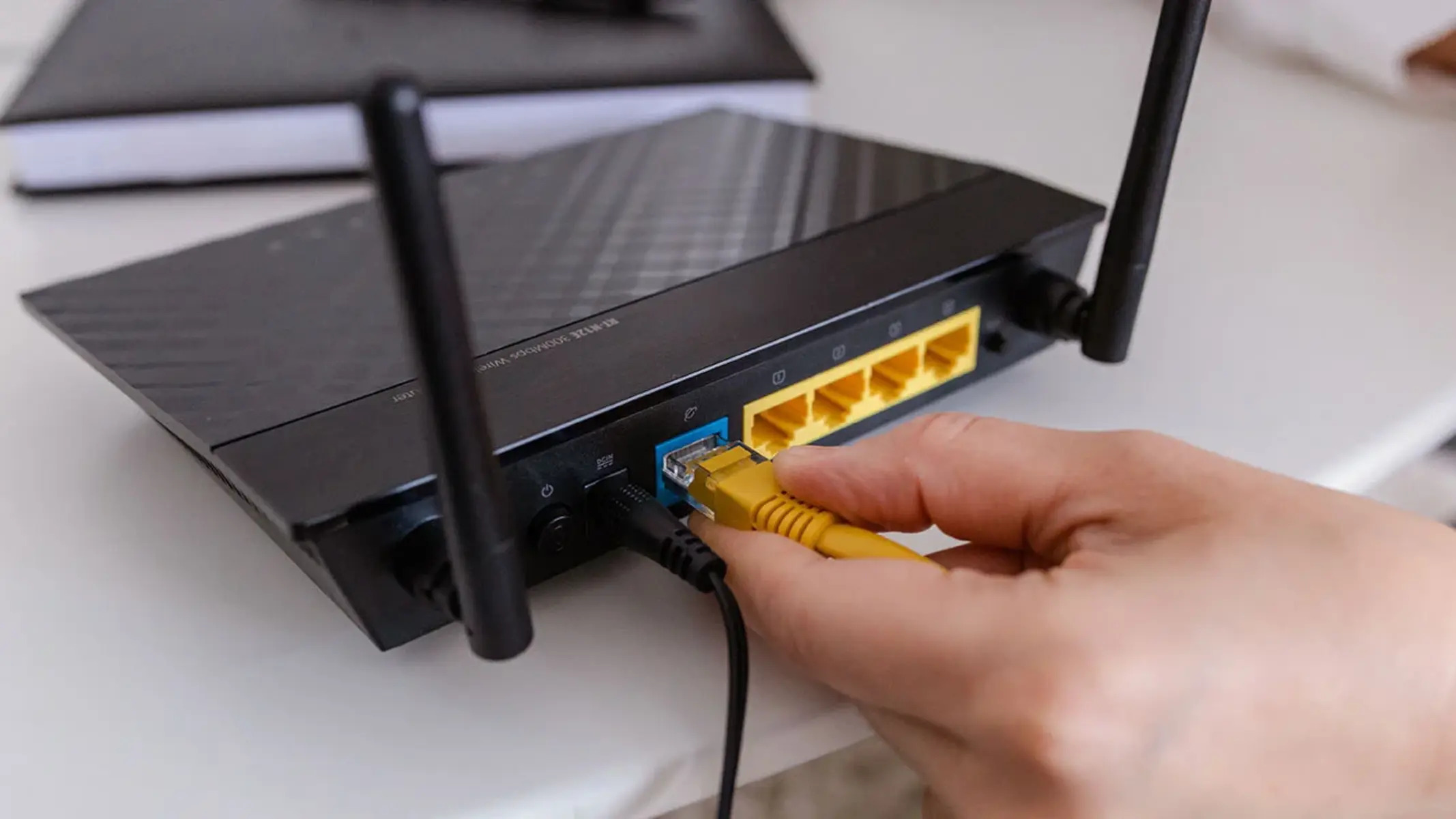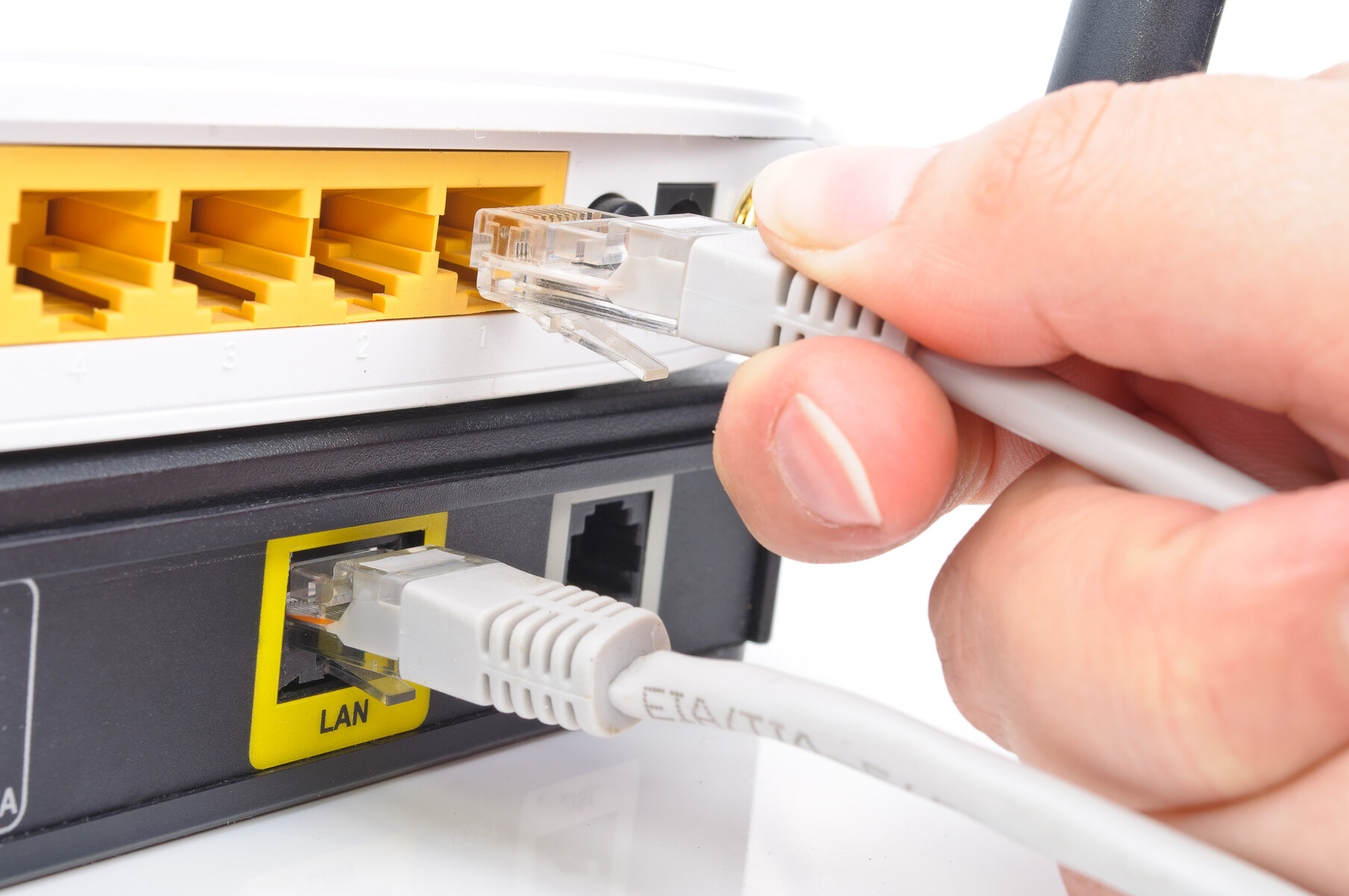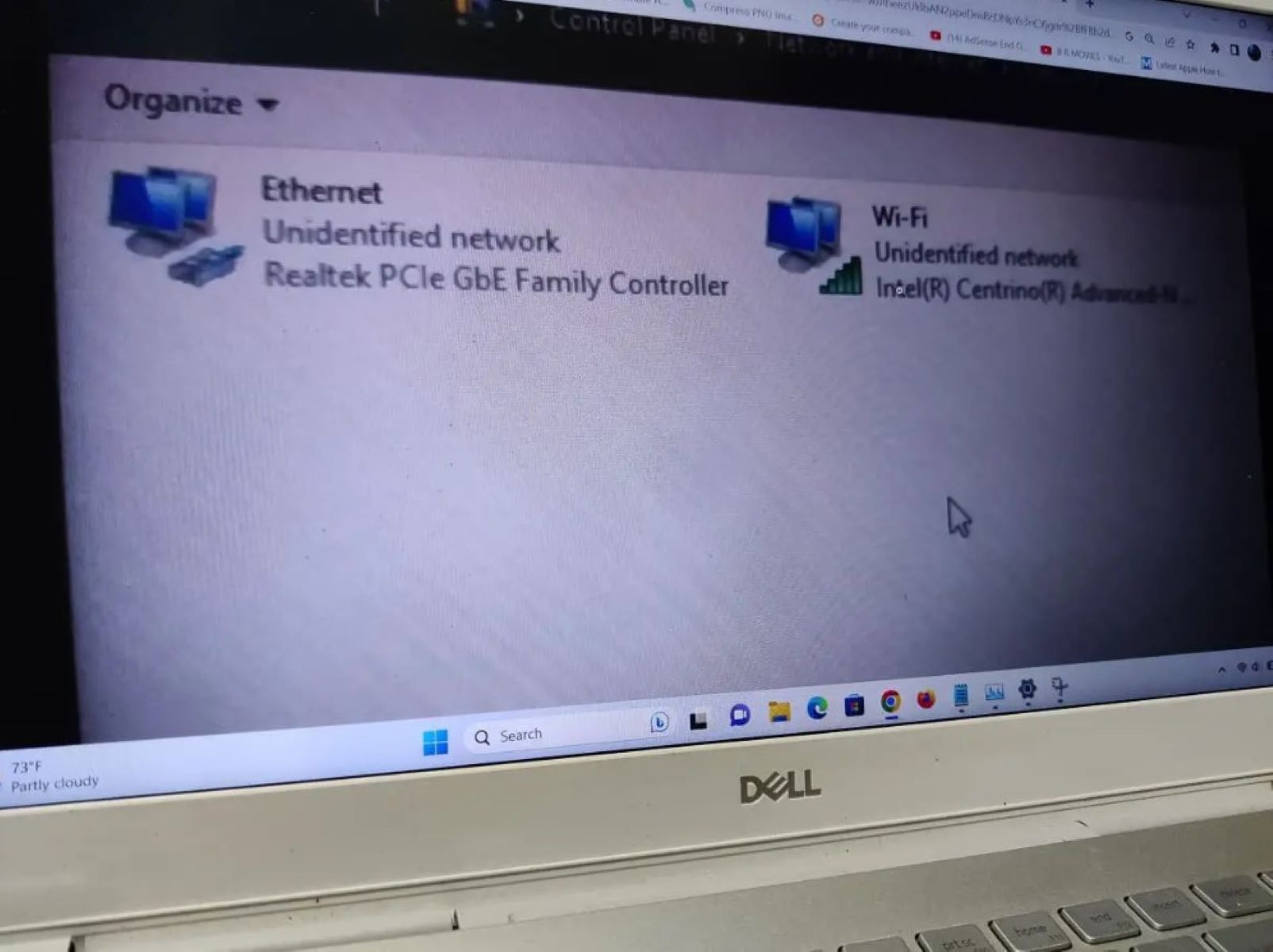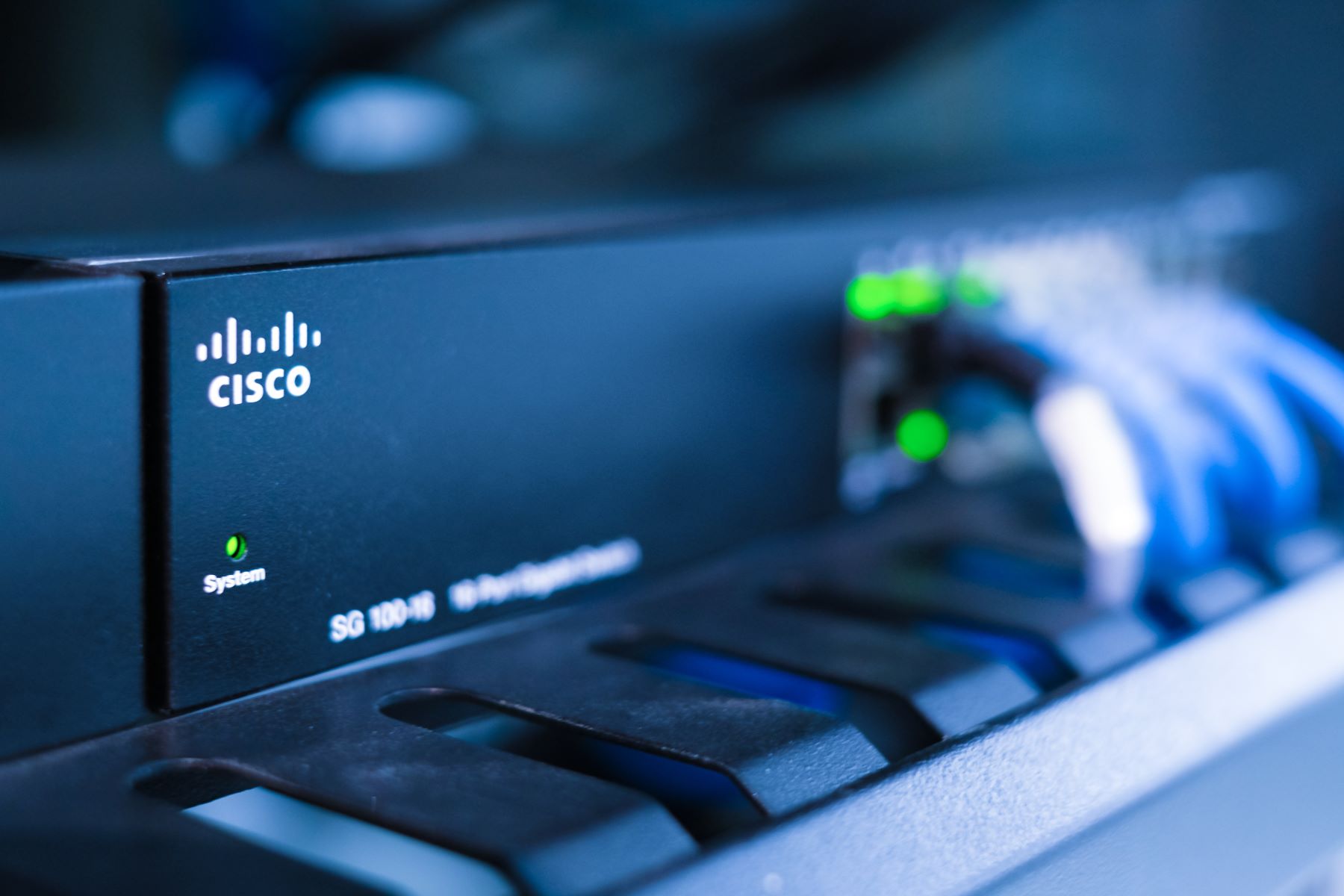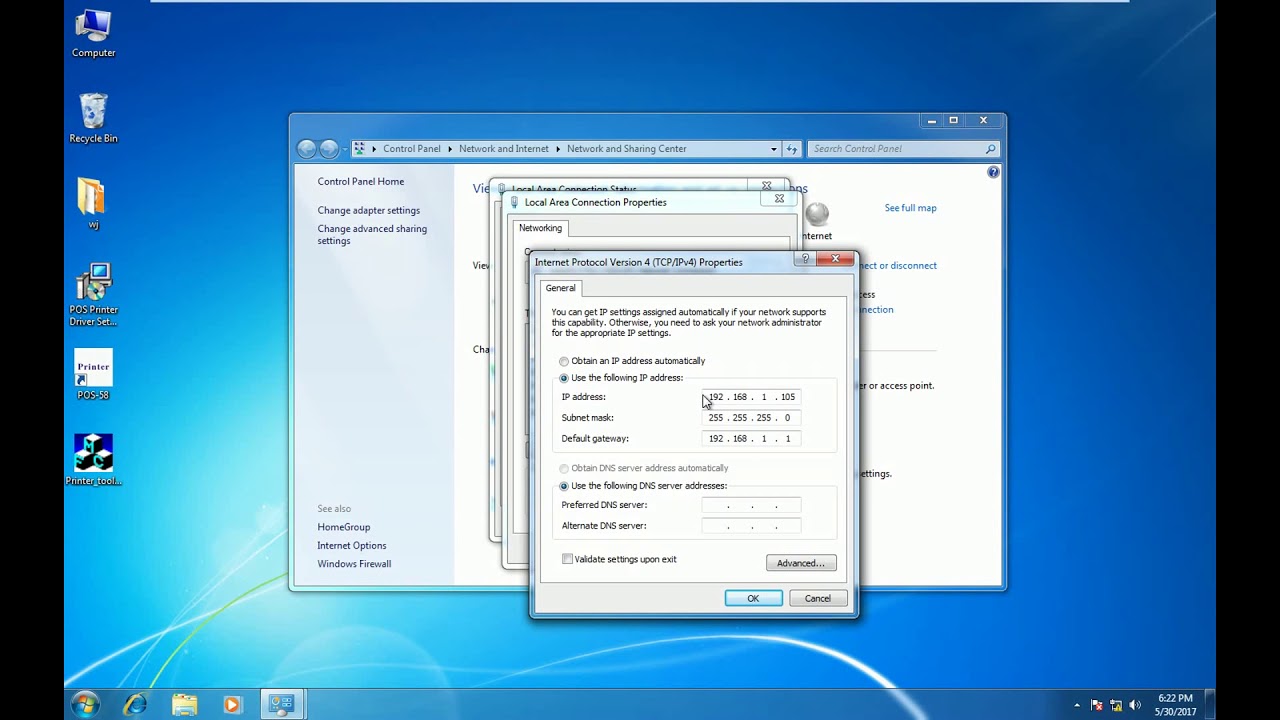Common Causes of “Ethernet Doesn’t Have a Valid IP Configuration” Error
When you encounter the “Ethernet Doesn’t Have a Valid IP Configuration” error, it can be frustrating and disrupt your internet connectivity. Understanding the common causes of this issue can help you troubleshoot and resolve it effectively. Here are some possible reasons why you may be experiencing this error:
- IP Address Conflict: This error can occur if there is an IP address conflict on your network. This happens when multiple devices are assigned the same IP address, causing a conflict and disrupting network communication.
- Outdated Network Drivers: If your network drivers are outdated or incompatible, it can lead to connectivity issues and trigger the “Ethernet Doesn’t Have a Valid IP Configuration” error. Keeping your drivers up to date is crucial for maintaining a stable and reliable connection.
- Network Adapter Issues: Problems with the network adapter itself can cause the error. A faulty or malfunctioning network adapter may fail to obtain a valid IP address, resulting in the connectivity problem.
- Incorrect Network Configuration: Sometimes, incorrect network configuration settings can lead to the IP configuration error. This can include incorrect settings for DHCP, subnet masks, or gateway addresses, preventing your computer from obtaining a valid IP address from the network.
- Firewall or Antivirus Interference: In some cases, your firewall or antivirus software may be blocking network communication, causing the “Ethernet Doesn’t Have a Valid IP Configuration” error. These security measures can sometimes interfere with network connections and prevent your device from obtaining an IP address correctly.
By identifying the common causes of this error, you can now proceed to the methods that can help resolve the issue and restore your internet connectivity. It is important to follow the troubleshooting steps carefully to effectively diagnose and address the underlying problem causing the “Ethernet Doesn’t Have a Valid IP Configuration” error.
Method 1: Restart the Router and Modem
One of the simplest and most effective methods to fix the “Ethernet Doesn’t Have a Valid IP Configuration” error is to restart your router and modem. Sometimes, network devices can encounter temporary issues or errors that can be resolved by power cycling them. Here’s how you can do it:
- Power off your modem and router by unplugging them from the power source.
- Wait for about 30 seconds to ensure that all residual power is drained from the devices.
- Plug the modem back into the power source and wait for it to fully initialize. This usually takes a few minutes.
- Once the modem is fully initialized, plug the router back into the power source and wait for it to boot up.
- Once both devices are up and running, check if the “Ethernet Doesn’t Have a Valid IP Configuration” error is resolved.
Restarting the router and modem can help refresh the network connection and resolve temporary glitches that may be causing the IP configuration error. This method is quick and simple, making it a good starting point for troubleshooting network issues.
If restarting the router and modem doesn’t fix the problem, you can proceed to try other methods to resolve the “Ethernet Doesn’t Have a Valid IP Configuration” error. It’s important to note that different methods may work for different individuals depending on the specific cause of the error. Continue with the troubleshooting steps until you find a solution that solves the issue for your particular setup.
Method 2: Disable and Enable Network Adapter
Another approach to fixing the “Ethernet Doesn’t Have a Valid IP Configuration” error is to disable and then re-enable the network adapter. This method can help refresh the network connection and resolve any temporary issues with the adapter. Follow these steps to carry out this method:
- Press the Windows key + X on your keyboard and select “Device Manager” from the options.
- In the Device Manager window, locate and expand the “Network Adapters” category.
- Right-click on your network adapter and select “Disable” from the drop-down menu.
- Wait a few seconds, then right-click on the disabled network adapter again and select “Enable” to re-enable it.
After re-enabling the network adapter, check if the “Ethernet Doesn’t Have a Valid IP Configuration” error is resolved. In most cases, this method can fix any temporary issues or conflicts with the adapter and allow it to obtain a valid IP configuration.
If this method doesn’t resolve the error, you can move on to other troubleshooting methods. Each step you take helps eliminate potential causes and gets you closer to identifying the underlying issue causing the IP configuration error. Remember to be patient and systematic as you work through the troubleshooting process.
Method 3: Release and Renew IP Configuration
If the previous methods have not resolved the “Ethernet Doesn’t Have a Valid IP Configuration” error, you can try releasing and renewing the IP configuration. This process can help clear any existing network settings and obtain a new IP address from the network. Follow these steps to release and renew the IP configuration:
- Press the Windows key + R on your keyboard to open the Run dialog box.
- Type “cmd” and press Enter to open the Command Prompt.
- In the Command Prompt window, type the following command and press Enter:
ipconfig /release - Wait for the command to complete. This will release the current IP configuration.
- Once the release is complete, type the following command and press Enter:
ipconfig /renew - Allow the command to execute fully. This will renew the IP configuration and obtain a new IP address.
After renewing the IP configuration, check if the “Ethernet Doesn’t Have a Valid IP Configuration” error is resolved. This method can help resolve any conflicts or issues with the IP address assignment and allow your computer to establish a valid connection.
If this method doesn’t fix the error, you may need to explore further troubleshooting steps. Understand that there can be multiple underlying causes for the IP configuration error, and it might take a combination of methods to resolve the issue. Proceed with the next method to continue your troubleshooting journey.
Method 4: Update Network Drivers
Outdated or incompatible network drivers can often cause the “Ethernet Doesn’t Have a Valid IP Configuration” error. Updating your network drivers to the latest version can resolve compatibility issues and improve the stability of your network connection. Here’s how you can update your network drivers:
- Press the Windows key + X on your keyboard and select “Device Manager” from the options.
- In the Device Manager window, locate and expand the “Network Adapters” category.
- Right-click on your network adapter and select “Update Driver” from the drop-down menu.
- Choose the option to automatically search for updated driver software. Windows will search online for the latest driver version and install it if available.
- Follow the on-screen instructions to complete the driver update process.
Once the driver update is complete, restart your computer and check if the “Ethernet Doesn’t Have a Valid IP Configuration” error is resolved. Updating the network drivers can address any compatibility issues and provide better support for your network adapter.
If Windows can’t find the latest driver version or if the issue persists after updating the drivers, you can try visiting the manufacturer’s website to manually download and install the updated drivers for your network adapter. Be sure to select the appropriate driver version that matches your operating system and the specific model of your network adapter.
Remember, keeping your network drivers up to date is essential for optimal performance and to avoid potential compatibility issues that can lead to connectivity problems. If updating the network drivers doesn’t resolve the IP configuration error, continue to the next method for further troubleshooting.
Method 5: Reset TCP/IP Stack
Resetting the TCP/IP stack can help fix the “Ethernet Doesn’t Have a Valid IP Configuration” error by clearing any corrupted or misconfigured network settings. The TCP/IP stack is responsible for handling network communication, and resetting it can resolve various network-related issues. Follow these steps to reset the TCP/IP stack:
- Open the Command Prompt as an administrator. Press the Windows key, type “cmd” in the search bar, right-click on “Command Prompt,” and select “Run as administrator.”
- In the Command Prompt window, type the following command and press Enter:
netsh int ip reset - Wait for the command to complete. This will reset the TCP/IP stack to its default settings.
- After the reset is complete, restart your computer to apply the changes.
Upon restarting, check if the “Ethernet Doesn’t Have a Valid IP Configuration” error is resolved. Resetting the TCP/IP stack can often clear any underlying network configuration issues and allow your computer to establish a valid IP configuration.
If the issue persists even after resetting the TCP/IP stack, move on to the next method to continue troubleshooting. Remember to perform each step carefully and in the specified sequence to effectively diagnose and resolve the IP configuration error.
Method 6: Disable IPv6
Disabling IPv6 can be an effective method to resolve the “Ethernet Doesn’t Have a Valid IP Configuration” error. Sometimes, IPv6 can conflict with your network configuration and cause connectivity issues. By disabling IPv6, you can force your computer to use IPv4 instead, which may help resolve the IP configuration error. Follow these steps to disable IPv6:
- Press the Windows key + X on your keyboard and select “Network Connections” from the options.
- In the Network Connections window, locate your active network connection. It is usually labeled as “Ethernet” or “Wi-Fi”.
- Right-click on your active network connection and select “Properties” from the drop-down menu.
- In the Properties window, find the “Internet Protocol Version 6 (TCP/IPv6)” option and uncheck the box next to it.
- Click on “OK” to save the changes.
After disabling IPv6, restart your computer and check if the “Ethernet Doesn’t Have a Valid IP Configuration” error is resolved. Disabling IPv6 forces your computer to use IPv4, which can potentially resolve any conflicts or issues with the IP configuration.
It’s important to note that disabling IPv6 is a temporary workaround and may not be necessary for all network setups. If disabling IPv6 resolves the error, you may consider contacting your internet service provider or network administrator for further guidance on configuring IPv6 properly.
If the issue remains unresolved after disabling IPv6, continue to the next method for further troubleshooting. Remember to re-enable IPv6 if it was previously necessary for your network setup.
Method 7: Disable Antivirus and Firewall Temporarily
Sometimes, your antivirus or firewall software can interfere with network communication and cause the “Ethernet Doesn’t Have a Valid IP Configuration” error. To determine if this is the case, you can try temporarily disabling your antivirus and firewall software. Here’s how:
- Locate the antivirus software icon in the system tray or taskbar and right-click on it.
- Look for an option to disable or turn off the antivirus protection temporarily. Select this option.
- If prompted, choose the duration for which you want to disable the antivirus software. Select the shortest period available, such as 15 minutes or 1 hour.
- Similarly, locate the firewall software on your computer and access its control panel.
- Disable the firewall protection temporarily by finding the option to turn it off or disable it.
Once you have disabled both the antivirus and firewall temporarily, check if the “Ethernet Doesn’t Have a Valid IP Configuration” error is resolved. By disabling these security measures temporarily, you can determine if they were causing any conflicts or blocking network communication.
Keep in mind that temporarily disabling your antivirus and firewall exposes your computer to potential security risks. It is crucial to re-enable these security measures as soon as you have completed the troubleshooting. If disabling the antivirus and firewall doesn’t fix the error, move on to the next method for further troubleshooting.
Method 8: Disable and Re-enable DHCP Function
The DHCP (Dynamic Host Configuration Protocol) is responsible for assigning IP addresses to devices on a network. Disabling and re-enabling the DHCP function can help resolve the “Ethernet Doesn’t Have a Valid IP Configuration” error if there are issues with the DHCP settings. Follow these steps to disable and re-enable the DHCP function:
- Press the Windows key + R on your keyboard to open the Run dialog box.
- Type “ncpa.cpl” in the Run dialog box and press Enter. This will open the Network Connections window.
- Right-click on your active network connection and select “Properties” from the drop-down menu.
- In the Properties window, scroll down and double-click on “Internet Protocol Version 4 (TCP/IPv4)”.
- Ensure that both the “Obtain an IP address automatically” and “Obtain DNS server address automatically” options are selected.
- Click on “OK” to save the changes.
- Restart your computer to apply the changes.
After re-enabling the DHCP function, check if the “Ethernet Doesn’t Have a Valid IP Configuration” error is resolved. This method can help ensure that your computer is properly obtaining an IP address from the network’s DHCP server and establish a valid connection.
If the issue persists after disabling and re-enabling the DHCP function, proceed to the next method for further troubleshooting. Each step you take brings you closer to identifying and resolving the cause of the IP configuration error.
Method 9: Check for Hardware Issues
If you have tried the previous methods without success, it is worth checking for any potential hardware issues that may be causing the “Ethernet Doesn’t Have a Valid IP Configuration” error. Here are some steps you can take to diagnose and resolve potential hardware problems:
- Inspect Ethernet Cable: Ensure that the Ethernet cable connecting your computer to the router or modem is securely plugged in at both ends and in good condition. A loose or damaged cable can cause connectivity issues.
- Test with a Different Cable: If possible, try using a different Ethernet cable to rule out the possibility of a faulty cable.
- Try Different Ports: Plug the Ethernet cable into different Ethernet ports on your router or modem to check if the issue is specific to a particular port.
- Restart Router and Modem: Once again, restart your router and modem to refresh the network connection and eliminate any temporary issues.
- Check Network Adapter: If none of the above steps resolve the error, there may be an issue with the network adapter itself. Try connecting another device to your router or modem using the same Ethernet cable to verify if the problem lies with the network adapter.
- Contact Technical Support: If you suspect a hardware issue and are unable to resolve it on your own, it is advisable to contact the technical support of your internet service provider or the manufacturer of your router or modem for further assistance.
By checking for hardware issues and taking appropriate steps, you can identify and address any potential causes of the “Ethernet Doesn’t Have a Valid IP Configuration” error. It is important to ensure that all physical components are properly connected and in good working condition for a stable network connection.
If the error persists even after checking for hardware issues, it may be necessary to seek professional help or consider replacing the faulty hardware component. Continue to the next section to conclude the troubleshooting process.
Conclusion
The “Ethernet Doesn’t Have a Valid IP Configuration” error can be a frustrating issue that disrupts your internet connectivity. However, by following the methods outlined in this article, you can troubleshoot and resolve this error effectively.
First, you should understand the common causes of the error, such as IP address conflicts, outdated network drivers, network adapter issues, incorrect network configuration, and firewall or antivirus interference. Identifying the underlying cause will help you choose the appropriate method to fix the error.
The methods discussed in this article include restarting the router and modem, disabling and enabling the network adapter, releasing and renewing the IP configuration, updating network drivers, resetting TCP/IP stack, disabling IPv6, temporarily disabling antivirus and firewall, disabling and re-enabling DHCP function, and checking for hardware issues.
It is important to remember that not all methods may work for every situation, as the cause of the error can vary. It may require a combination of methods or further troubleshooting to resolve the issue completely. Additionally, be cautious when making changes to your network settings and always consider the potential security risks involved.
If you are unable to resolve the “Ethernet Doesn’t Have a Valid IP Configuration” error after trying these methods, it is recommended to seek professional assistance or contact the technical support of your internet service provider or network equipment manufacturer for further assistance.
Remember, troubleshooting network issues can be a process of trial and error. Patience, thoroughness, and attention to detail are key to successfully resolving the error and restoring your internet connectivity.







